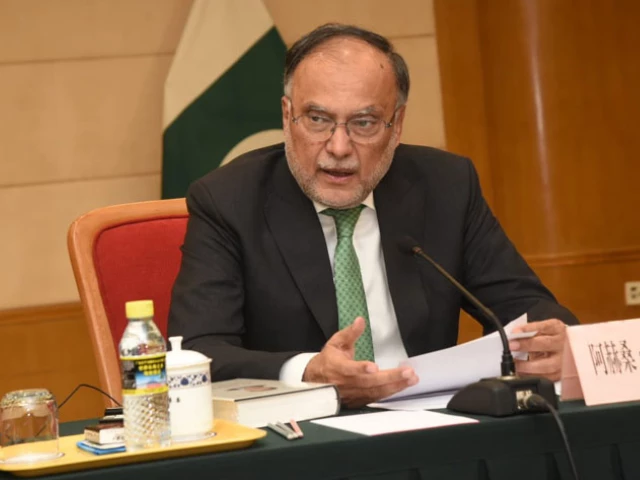Business
Ulta Beauty raises full-year forecast after reporting growth in all major categories

Ulta Beauty on Thursday raised its full-year forecast, after reporting growth in all major categories and topping Wall Street’s quarterly sales expectations.
The beauty retailer said it expects net sales of between $12 billion and $12.1 billion, up from its previous range of $11.5 billion and $11.7 billion, representing an increase from last fiscal year’s net sales of $11.3 billion. It expects earnings per share of $23.85 to $24.30, up from its previous range of $22.65 to $23.20.
It expects comparable sales, a metric that takes out one-time factors like store openings and closures, to grow between 2.5% to 3.5%, up from projections of as much as 1.5%. The company had raised its annual profit forecast and the upper end of its full year sales range in May.
In the company’s news release, CEO Kecia Steelman said its outlook for the year “reflects both the strength of our year-to-date performance and our caution around how consumer demand may evolve in the second half of the year.”
Shares of Ulta gained about 3% in extended trading, after earlier hitting a 52-week during the regular session.
Here’s what the company reported for the fiscal second quarter compared with what Wall Street expected, according to LSEG:
- Earnings per share: $5.78. It was not immediately clear if that was comparable to the $5.08 expected by analysts.
- Revenue: $2.79 billion vs. $2.67 billion expected
In the three-month period that ended August 2, Ulta’s net income rose to $260.88 million, or $5.78 per share, from $252.6 million, or $5.30 per share, in the year-ago period. Revenue increased from $2.55 billion in the year-ago quarter.
Beauty has remained a hot category for consumers, even as they pull back or watch their spending in other discretionary categories. Yet that’s fueled tougher competition for Ulta Beauty as specialty players like LVMH-owned Sephora, big-box retailers like Walmart and department stores like Kohl’s have all bulked up their beauty businesses.
For investors, tariffs have been a closely watched challenge for retailers, too. Compared to other retailers, Ulta is not as directly exposed. Only about 1% of the company’s merchandise last fiscal year was direct imports, then-CFO Paula Oyibo said in May on the company’s earnings call. She said at the time most of Ulta’s exposure to the higher duties was minor, such as store fixtures and supplies.
Even in tumultous economic times, Steelman said beauty and wellness tend to fare better because they “offer a unique sense of comfort and escape.”
“Our insight suggests consumers continue to prudently manage their day-to-day spending and are watchful of pricing trends in response to tariffs,” she said on the earnings call. “At the same time, beauty enthusiasts tell us that they’re prioritizing their beauty regimens and remain strongly engaged within the category.”
In the second quarter, Ulta’s comparable sales grew 6.7% year over year, more than double analysts’ expectations, according to StreetAccount.
Customers visited more and spent more when they shopped on Ulta’s website and in its stores compared to the year-ago quarter. Transactions rose by 3.7% and average ticket increased by 2.9%.
Ulta added new brands and products that drove purchases in the quarter, including more products from Sol de Janeiro, exclusive Korean beauty brand Peach & Lily and Shakira’s hair care brand, Isima, Steelman said on the company’s earnings call.
Plus, she said, it’s trying to reach more of its existing and prospective customers in new ways. It had an activation at the Coachella and Lollapalooza music festivals and was the official beauty retail partner of Beyonce’s Cowboy Carter Tour.
In a growing number of Ulta stores, it is dedicating space to wellness-related products, such as supplements. It has opened a wellness shop in about 370 stores and plans to expand them to more stores this quarter, Steelman said.
Along with attracting more customers in the U.S., Ulta has looked internationally for growth. It announced in July that had acquired Space NK, a British beauty retailer, from Manzanita Capital. The deal allows Ulta to enter a new international market, since Space NK has 83 stores in the United Kingdom and Ireland.
Ulta did not disclose the price of the acquisition, saying it funded the transaction with cash on hand and Ulta’s existing credit facility and that it would not be material to financial results for the fiscal year.
For Ulta, Space NK offered a less expensive way to enter a new market, Steelman said. Its business, which will continue to operate independently, could offer learnings that could shape Ulta’s strategy, she said. Compared to Ulta, its shops tend to be smaller, located on main streets in cities and sell primarily prestige beauty merchandise.
The company is expanding in other international markets, too. Ulta recently marked the soft opening of its first Ulta store in Mexico and it plans to open its first store in the Middle East later this year, Steelman said Thursday on the company’s earnings call.
Ulta is also introducing a third-party marketplace, which Steelman said will launch in the third quarter. A growing number of retailers, including Best Buy, are launching the marketplaces a way to expand the mix of merchandise they carry without needing more store shelf space or buying more of their own inventory.
At the same time, Ulta recently announced the end of one of its efforts to expand reach. It cut ties with Target, which had opened mini Ulta shops in more than 600 big-box stores. The licensing deal, which will end in August 2026, allowed Target to sell a smaller and rotating assortment of makeup, skincare, hair care products and more that are carried by the full Ulta stores. Target carried those items on its website, and it staffed the shops.
For Ulta, however, the Target deal contributed little to its finances, Steelman said. Royalty revenue from the deal last fiscal year “was well below 1% of net sales,” she said on the company’s earnings call.
Ulta is looking for a new CFO as well. The company’s former CFO, Oyibo, left Ulta in late June after about a year in the role. Ulta has not yet announced her permanent successor.
Business
Stock Market Live Updates: Sensex, Nifty Hit Record Highs; Bank Nifty Climbs 60,000 For The First Time

Stock Market News Live Updates: Indian equity benchmarks opened with a strong gap-up on Monday, December 1, touching fresh record highs, buoyed by a sharp acceleration in Q2FY26 GDP growth to a six-quarter peak of 8.2%. Positive cues from Asian markets further lifted investor sentiment.
The BSE Sensex was trading at 85,994, up 288 points or 0.34%, after touching an all-time high of 86,159 in early deals. The Nifty 50 stood at 26,290, higher by 87 points or 0.33%, after scaling a record intraday high of 26,325.8.
Broader markets also saw gains, with the Midcap index rising 0.27% and the Smallcap index advancing 0.52%.
On the sectoral front, the Nifty Bank hit a historic milestone by crossing the 60,000 mark for the first time, gaining 0.4% to touch a fresh peak of 60,114.05.
Meanwhile, the Metal and PSU Bank indices climbed 0.8% each in early trade.
Global cues
Asia-Pacific markets were mostly lower on Monday as traders assessed fresh Chinese manufacturing data and increasingly priced in the likelihood of a US Federal Reserve rate cut later this month.
According to the CME FedWatch Tool, markets are now assigning an 87.4 per cent probability to a rate cut at the Fed’s December 10 meeting.
China’s factory activity unexpectedly slipped back into contraction in November, with the RatingDog China General Manufacturing PMI by S&P Global easing to 49.9, below expectations of 50.5, as weak domestic demand persisted.
Japan’s Nikkei 225 slipped 1.6 per cent, while the broader Topix declined 0.86 per cent. In South Korea, the Kospi dropped 0.30 per cent and Australia’s S&P/ASX 200 was down 0.31 per cent.
US stock futures were steady in early Asian trade after a positive week on Wall Street. On Friday, in a shortened post-Thanksgiving session, the Nasdaq Composite climbed 0.65 per cent to 23,365.69, its fifth consecutive day of gains.
The S&P 500 rose 0.54 per cent to 6,849.09, while the Dow Jones Industrial Average added 289.30 points, or 0.61 per cent, to close at 47,716.42.
Business
South Korea: Online retail giant Coupang hit by massive data leak

Osmond ChiaBusiness reporter
 Getty Images
Getty ImagesSouth Korea’s largest online retailer, Coupang, has apologised for a massive data breach potentially involving nearly 34 million local customer accounts.
The country’s internet authority said that it is investigating the breach and that details from the millions of accounts have likely been exposed.
Coupang is often described as South Korea’s equivalent of Amazon.com. The breach marks the latest in a series of data leaks at major firms in the country, including its telecommunications giant, SK Telecom.
Coupang told the BBC it became aware of the unauthorised access of personal data of about 4,500 customer accounts on 18 November and immediately reported it to the authorities.
But later checks found that some 33.7 million customer accounts – all in South Korea – were likely exposed, said Coupang, adding that the breach is believed to have begun as early as June through a server based overseas.
The exposed data is limited to name, email address, phone number, shipping address and some order histories, Coupang said.
No credit card information or login credentials were leaked. Those details remain securely protected and no action is required from Coupang users at this point, the firm added.
The number of accounts affected by the incident represents more than half of South Korea’s roughly-52 million population.
Coupang, which is founded in South Korea and headquartered in the US, said recently that it had nearly 25 million active users.
Coupang apologised to its customers and warned them to stay alert to scams impersonating the company.
The firm did not give details on who is behind the breach.
South Korean media outlets reported on Sunday that a former Coupang employee from China was suspected of being behind the breach.
The authorities are assessing the scale of the breach as well as whether Coupang had broken any data protection safety rules, South Korea’s Ministry of Science and ICT said in a statement.
“As the breach involves the contact details and addresses of a large number of citizens, the Commission plans to conduct a swift investigation and impose strict sanctions if it finds a violation of the duty to implement safety measures under the Protection Act.”
The incident marks the latest in a series of breaches affecting major South Korean companies this year, despite the country’s reputation for stringent data privacy rules.
SK Telecom, South Korea’s largest mobile operator, was fined nearly $100m (£76m) over a data breach involving more than 20 million subscribers.
In September, Lotte Cards also said the data of nearly three million customers was leaked after a cyber-attack on the credit card firm.
Business
Agency workers covering for Birmingham bin strikers to join picket lines

Agency workers hired to cover Birmingham bin strikers will join them on picket lines on Monday, a union has said.
A rally will be held by Unite The Union at Smithfield Depot on Pershore Street, Birmingham, on Monday morning to mark the first day of strike action by agency refuse workers.
Unite said the Job & Talent agency workers had voted in favour of strike action “over bullying, harassment and the threat of blacklisting at the council’s refuse department two weeks ago”.
The union said the number of agency workers who will join the strike action is “growing daily”.
Strikes by directly-employed bin workers, which have been running since January, could continue beyond May’s local elections.
The directly-employed bin workers voted in favour of extending their industrial action mandate earlier this month.
Unite general secretary Sharon Graham said: “Birmingham council will only resolve this dispute when it stops the appalling treatment of its workforce.
“Agency workers have now joined with directly-employed staff to stand up against the massive injustices done to them.
“Instead of wasting millions more of council taxpayers’ money fighting a dispute it could settle justly for a fraction of the cost, the council needs to return to talks with Unite and put forward a fair deal for all bin workers.
“Strikes will not end until it does.”
-

 Sports1 week ago
Sports1 week agoWATCH: Ronaldo scores spectacular bicycle kick
-

 Entertainment1 week ago
Entertainment1 week agoWelcome to Derry’ episode 5 delivers shocking twist
-

 Politics1 week ago
Politics1 week agoWashington and Kyiv Stress Any Peace Deal Must Fully Respect Ukraine’s Sovereignty
-

 Business1 week ago
Business1 week agoKey economic data and trends that will shape Rachel Reeves’ Budget
-

 Tech6 days ago
Tech6 days agoWake Up—the Best Black Friday Mattress Sales Are Here
-

 Fashion7 days ago
Fashion7 days agoCanada’s Lululemon unveils team Canada kit for Milano Cortina 2026
-

 Politics1 week ago
Politics1 week ago53,000 Sikhs vote in Ottawa Khalistan Referendum amid Carney-Modi trade talks scrutiny
-

 Tech6 days ago
Tech6 days agoThe Alienware Aurora Gaming Desktop Punches Above Its Weight


1729471601-0/image-(8)1729471601-0-640x480.webp)








